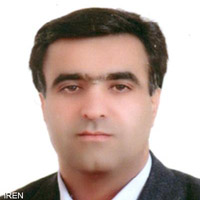Investigating the ability of Dyna-CLUE model in analyzing and predicting future land use patterns in Simineh River Basin
Land use change are the result of complex interactions between many processes. Many models have been developed in recent decades to understand these dynamics. The present study, using Landsat satellite images and applying the maximum probability classification algorithm, examined the land use pattern of Simine River basin in 2000, 2005, 2010 and 2017 and identifies the historical transformations of them. Finally, the various scenarios of land use change in 2040 will be examined using the latest version of the Dyna-CLUE land use model. The results of modeling indicate Dyna-CLUE model performance in analyzing and predicting future land use patterns at the basin level and its calibration and validation coefficients in 2005 and 2010 are 0.84 and 0.69, respectively. Analysis of land use changes between 2000 and 2017 has shown that the most change was the conversion of rangeland lands to irrigated lands; So that about 343 square kilometers of rangeland lands (equivalent to 13%) decreased and irrigated agricultural lands increased by about 127%. Also, the spatial arrangement of land use classes in 2040 in the form of three optimistic, pessimistic and the continuation of the previous trend scenarios and its outputs have shown that the future pattern of most land use classes in the region has not changed much compared to historical spatial patterns and shows a marginal spatial expansion. The results of this study can be used as an effective tool for environmental planners to manage the future infrastructure of the Simine River basin.
-
Evaluation of Machine Learning Techniques (SVM, GLM, FDA, RF) in Preparing Flood Susceptibility Map of a Part of Khuzestan Province
Royat Ghanavati *, , Hamidreza Pourghasemi, Shahram Khalighi Sigaroodi, Hamidreza Keshtkar
Journal of Water and Soil Management and Modeling, -
Forecasting Precipitation and Temperature in the Qareh-Sou Watershed: Emphasizing Model Uncertainties
Golaleh Ghaffari *, Ali Salajegh
Journal of Geography and Environmental Hazards, Spring 2025


